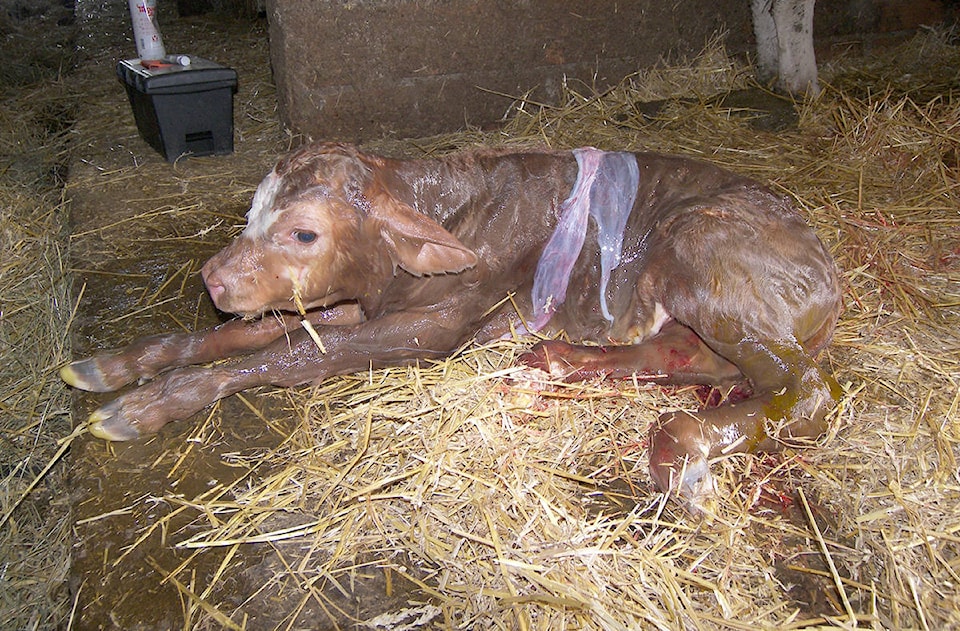It’s calving season for local cattle operations.
Local farmers Bonny and Richard Morley, who own an operation on Rawlings Road, past Bouchie Lake, are well into their calving season, with around half their cows having given birth so far this year.
“We calve out between 75 and 80 cows, between the two of us,” says Bonny.
“By the end of March we will be pretty well finished. It’s been absolutely hectic.”
Calving is a round-the-clock event on the ranch, with cows needing to be monitored 24/7 to make sure they are safe, clean and comfortable throughout the birthing process.
Bonny and Richard take turns watching the cows, with Bonny taking the night shift and Richard taking over at 4 a.m.
The couple have a camera system set up in the calving barn so they can keep an eye on things from the house, and get down to the barn if any problems arise.
“We have a series of pens, and a calving barn with four stalls. We have a series of gates and head catches that we use to minimize stress to the animals and to keep us safe,” comment Bonny.
Bonny says they focus first on their own safety, and second on the safety of the animals, and then on keeping the areas comfortable and quiet for the cows.
The most common cause for concern to the safety of the animal is if the calf has not entered the birth canal in the right direction. Normally, the calf is born with the front legs coming out first and head between the front legs. Any other presentation can be dangerous to both mother and baby.
The danger to humans, however, is mainly in the unpredictability of the cow – they often become very agitated during and directly after giving birth.
“People do get themselves into bad situations – and we have as well – where you trust the animal too much to react the way you think it will. Even animals that you think you know, a lot of times it will react differently. There could be something going on that you don’t realize. You have to protect yourself and your animals from the variables in any situation.”
Bonny says the calving stalls are loose, and a good size so that the cows can move around as they need to.
“We have one stall with a space where we can get in to help them if we need too,” she says.
“As soon as you see two little toenails sticking out, you know if they are upside down, backwards or whatever, and you’ll know if you have to step in or not.”
Once the babies are born, it’s a matter of keeping the larger animals from stepping or crowding the calves, and making sure they all have clean, dry hay to sleep on.
The Morleys’ system is tried and true, having been perfected over about 50 years.
“We just try to concentrate on keeping everyone from being injured before the season is over,” says Bonny.
